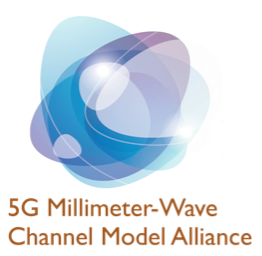
Note from the Editor: The National Institute of Standards and Technology (NIST), over the last few years, has been measuring and charting findings made in the developmental stages of 5G wireless service. And beyond just that, they’ve been making their findings open to the public with the 5G mmWave Channel Model Alliance. What began as a collaboration between the group and a dozen contributors has transformed into a globally accessible fountain of knowledge compiled by sixty five separate organizations from every corner of the globe, from academics to businesses to developers, all helping publicize their findings and spread valuable information to any curious party. And not for a cent of profit; this is all done in the name of spreading knowledge.
I recently got the opportunity to speak with Nada Golmie, chief of the Wireless Networks Division at the NIST Communications Technology Laboratory about the group, what they’ve accomplished, and the good they continue to do with their alliance.
—
B: What brought the alliance together in the first place?
N: A little less than two years ago, the 5G mmWave Channel Model alliance was launched in July 2015, in a bid to create a nexus of millimeter-wave channel propagation measurements and models to be used by developers, academics, and vendors all around the world. The millimeter-wave band represents the next frontier in wireless technology. However, to operate in the millimeter-wave, it’s vital to have a good understanding for how signal propagate in higher frequencies, hence the need for accurate channel propagation measurements and models.
B: What is the purpose of the alliance, in the simplest terms?
N: It is mainly about pulling resources together to provide an in-depth understanding of the unique characteristics of millimeter-wave propagation. It is also about providing the methodologies and best practices for measurement calibration, verification, and channel modeling, in addition to the measurement and modeling data. Our two largest efforts to date have been towards the development of two white papers on millimeter-wave measurement verification and channel modeling. These will be published soon. At the same time we are gearing up towards more measurement campaigns to be conducted by our members.
B: Has there been any competition between companies or groups? Or have they been able to fully work together for the greater good?
N: We have an organizational charter that describes the alliance scope, mission and participation, which is open to the public. We have seen a lot of cooperation so far between the various members and participants to share information and data and work together as a community towards a common set of objectives. We are creating an ecosystem for data and techniques. We don’t pay any of our contributors; This isn’t about someone’s bottom line, this is physics. No one has the IP on physics. This is to build a library of information that everyone, everywhere has access to.
—
The measurement data repository went live in December 2016. For more information about the Alliance and the work they’ve done, click here:
https://sites.google.com/a/corneralliance.com/5g-mmwave-channel-model-alliance-wiki/
